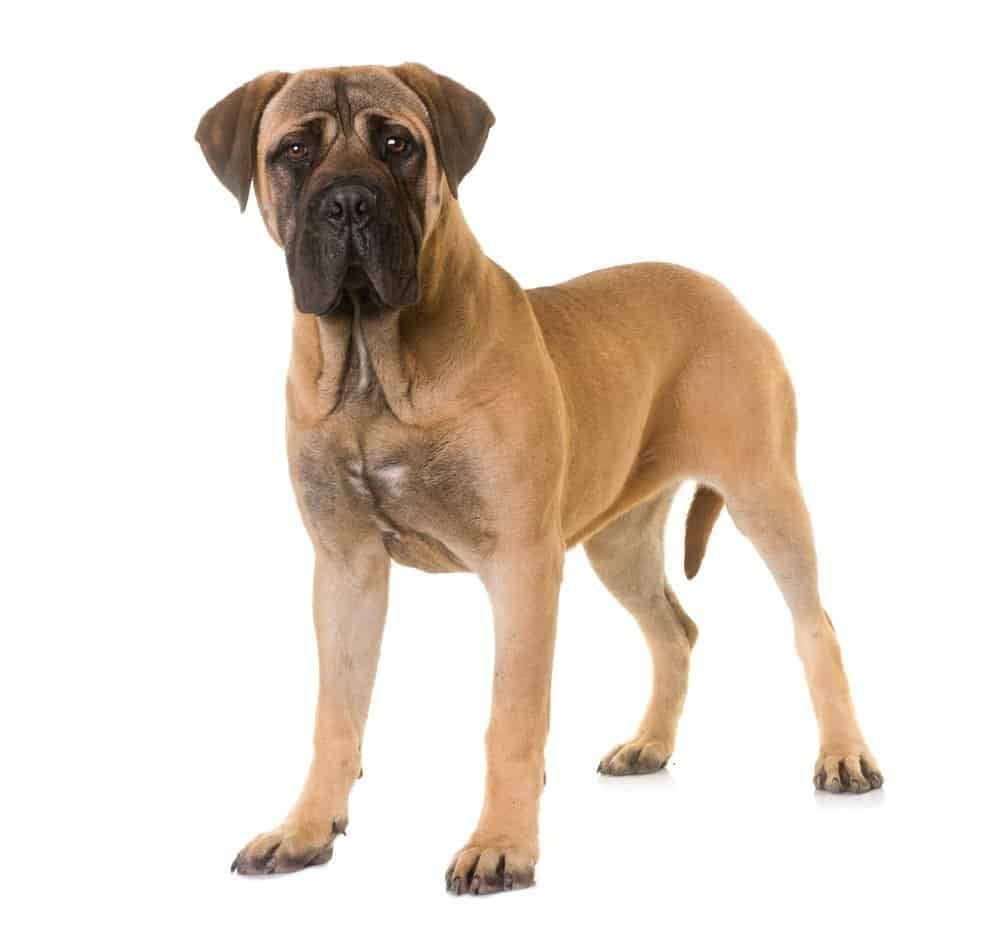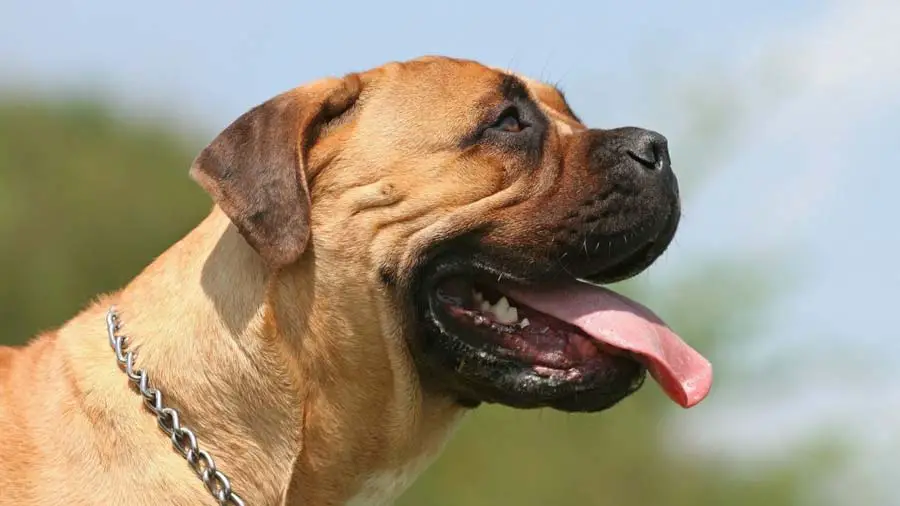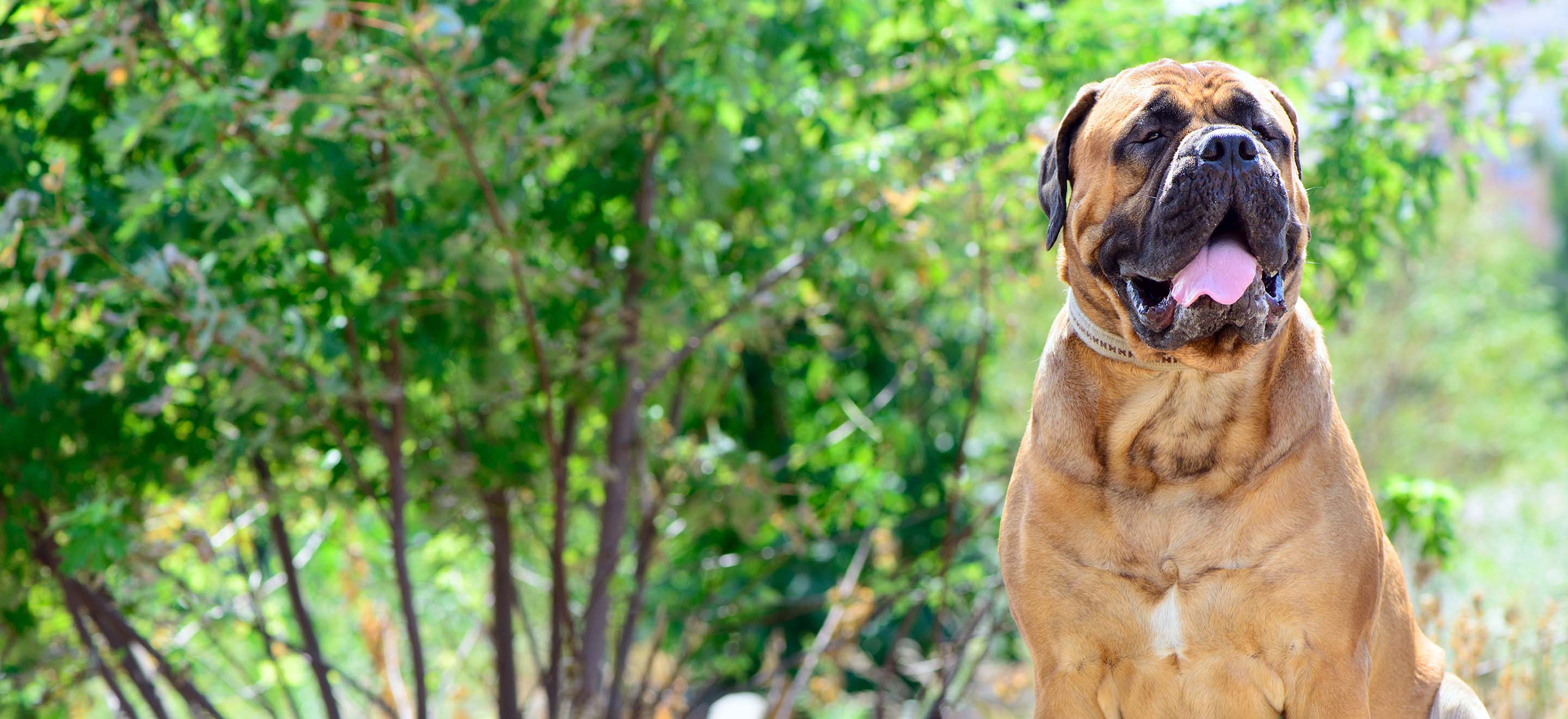The Bullmastiff is a breed that exudes strength, loyalty, and gentle nature. They are often used as guard dogs and family pets due to their protective instincts and affectionate personalities. This relatively new breed was developed in 19th century England by crossing the Bulldog with the Mastiff. In this article, we will explore the unique characteristics of the Bullmastiff breed, including their strength, companionship, and suitability as a family pet.
History of the Bullmastiff

The Bullmastiff breed originated in England in the mid-1800s. They were created by gamekeepers who needed a dog that could help them protect large estates from poachers. The gamekeepers wanted a dog that was strong, fearless, and had a keen sense of smell. Thus, they crossed the powerful Mastiff with the agile and tenacious Bulldog. The result was a breed that had the size and strength of the Mastiff, combined with the speed and agility of the Bulldog.
Initially, Bullmastiffs were known as “Gamekeeper’s Night Dogs” and were kept as working dogs. However, as their popularity grew, they became more commonly used as guard dogs and family pets. The breed was recognized by the American Kennel Club (AKC) in 1933 and has since become a beloved breed among dog owners.
Physical Characteristics of the Bullmastiff

Bullmastiffs are large, muscular dogs with a broad head and short muzzle. They typically stand between 24 to 27 inches tall at the shoulder and weigh between 100 to 130 pounds. Their coat is short, dense, and can come in various colors such as fawn, red, or brindle. They have a black mask on their face, which adds to their distinctive appearance.
One notable physical characteristic of the Bullmastiff is their brachycephalic face, which means they have a short muzzle and flat face. While this feature gives them a unique look, it can also make them prone to breathing problems in hot weather. As such, it is essential to keep them cool and hydrated during the summer months.
Strength of the Bullmastiff
Bullmastiffs are known for their strength, which is one of the main reasons they were initially bred. They have a powerful, muscular build that allows them to take down intruders or protect their families if necessary. Their large size and weight also make them an excellent choice for pulling heavy loads, such as sleds or carts.
Their strength is not just limited to physical abilities; Bullmastiffs also possess incredible mental strength. They are highly intelligent dogs and have a strong sense of loyalty towards their owners. This makes them great guard dogs, as they will do whatever it takes to protect their family and home.
Physical Strength
The physical strength of the Bullmastiff is evident in their impressive stature and muscular build. They have a broad chest, powerful legs, and a sturdy frame that allows them to move with ease and agility. These physical attributes make them well-suited for various tasks, including guarding, tracking, and pulling.
In terms of their bite strength, Bullmastiffs rank among the top 10 breeds with the strongest bite force. According to a study conducted by National Geographic, the average bite force of a Bullmastiff is around 556 pounds per square inch (psi). This is more than enough to deter any potential intruders or protect their loved ones.
Mental Strength
Aside from their physical strength, Bullmastiffs also possess remarkable mental strength. They are highly intelligent and have a strong sense of loyalty towards their owners. This makes them excellent guard dogs, as they are always alert and ready to protect their family and home.
Furthermore, Bullmastiffs are known for their calm and confident demeanor, which is a testament to their mental strength. They are not easily provoked and can handle stressful situations with ease. This makes them an excellent choice for families with children, as they can remain composed even in chaotic environments.
Companionship of the Bullmastiff
Despite their size and strength, Bullmastiffs are incredibly gentle and affectionate dogs. They form strong bonds with their owners and are known for their unwavering loyalty and devotion. They thrive on human companionship and make great family pets due to their loving and protective nature.
Loyal and Protective
Bullmastiffs have a natural instinct to protect their loved ones, making them ideal guard dogs. They are fiercely loyal and will do whatever it takes to keep their family safe. Their protective nature extends beyond just their owners; they are also known to be protective of children and other household pets.
Their loyalty also means that they are highly trainable and eager to please their owners. With proper training and socialization, Bullmastiffs can become well-behaved and obedient companions. However, it is essential to establish yourself as the pack leader from a young age to prevent any potential stubbornness or dominance issues.
Affectionate and Gentle
Despite their intimidating appearance, Bullmastiffs are gentle giants at heart. They love nothing more than spending time with their owners and crave attention and affection. They are known to be great with children, and their calm and patient nature make them an ideal family pet.
Bullmastiffs are also known for their sensitivity and can pick up on their owner’s emotions. They are excellent therapy dogs and have been used to provide comfort and support to individuals with emotional or physical disabilities. Their gentle and loving nature makes them an excellent companion for people of all ages.
Caring for a Bullmastiff

Bullmastiffs are a relatively low-maintenance breed, making them an excellent choice for busy families or first-time dog owners. They only require minimal grooming and exercise, but they do need proper training and socialization to ensure they grow into well-behaved and happy dogs.
Grooming
Bullmastiffs have a short, smooth coat that is easy to maintain. They shed moderately throughout the year, so weekly brushing is recommended to remove any loose hair and keep their coat healthy and shiny. They also only need to be bathed every few months, unless they get particularly dirty or smelly.
It is essential to regularly check and clean your Bullmastiff’s ears to prevent any infections. Their wrinkles should also be cleaned and dried thoroughly to avoid any skin irritations. Additionally, their nails should be trimmed regularly to prevent overgrowth and potential injuries.
Exercise
Despite their size and strength, Bullmastiffs are relatively inactive dogs. They do not require a lot of exercise and are content with a daily walk or play session in the yard. However, it is crucial to keep them mentally stimulated, as they can become bored and destructive if left alone for extended periods.
Bullmastiffs are prone to weight gain, so it is essential to monitor their food intake and provide them with a balanced diet. Obesity can lead to various health issues, such as joint problems and breathing difficulties. Regular exercise and a healthy diet will help keep your Bullmastiff in top shape and prevent any potential health concerns.
Training and Socialization
Training and socialization are crucial for Bullmastiffs, as they can be stubborn and independent at times. It is essential to establish yourself as the pack leader from a young age to prevent any potential dominance issues. Positive reinforcement techniques work best with this breed, as they respond well to praise and rewards.
Socialization is also essential for Bullmastiffs, as they can be wary of strangers and other animals. Early exposure to different people, animals, and environments will help them become well-adjusted and confident dogs. It is also essential to teach them proper manners and obedience to ensure they are well-behaved in all situations.
Is a Bullmastiff Right for You?

Bullmastiffs are a great choice for families who are looking for a loyal, gentle, and protective dog. They are also a good breed for people who are looking for a low-maintenance dog. However, it is crucial to consider the following factors before bringing a Bullmastiff into your home:
- Space: Due to their large size, Bullmastiffs require ample space to move around comfortably. They can adapt to apartment living as long as they receive regular exercise, but a house with a yard would be ideal.
- Time: While Bullmastiffs do not require a lot of exercise, they do need plenty of attention and companionship. They thrive on human interaction and can develop behavioral issues if left alone for extended periods.
- Training: As mentioned earlier, Bullmastiffs can be stubborn and independent, so proper training and socialization are essential. They also need a firm and consistent owner who can establish themselves as the pack leader.
- Health concerns: Like all breeds, Bullmastiffs are prone to certain health issues, such as hip and elbow dysplasia, bloat, and eye problems. It is crucial to research these potential health concerns and be prepared for any potential medical expenses.
Video
Conclusion
In conclusion, the Bullmastiff is a breed that embodies strength, loyalty, and companionship. They have a rich history and were initially bred for their impressive physical abilities and protective instincts. However, they have since become beloved family pets due to their gentle and affectionate nature.
Bullmastiffs are a relatively low-maintenance breed, making them an excellent choice for families or individuals who are looking for a loyal and protective companion. With proper care, training, and socialization, Bullmastiffs can make wonderful additions to any household. So, if you are considering adding a Bullmastiff to your family, be prepared for a lifetime of love, loyalty, and strength.